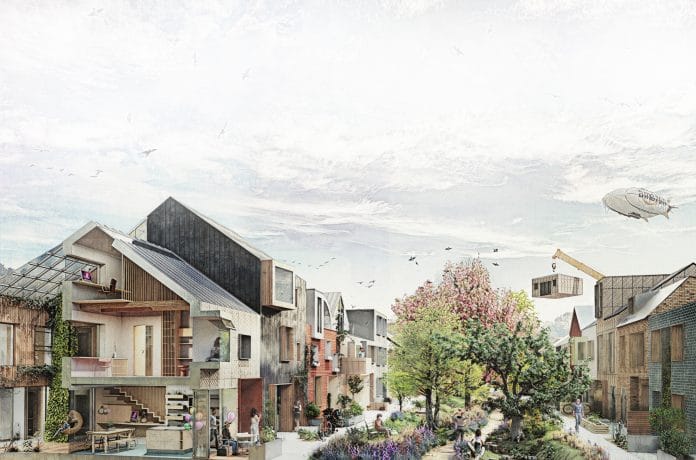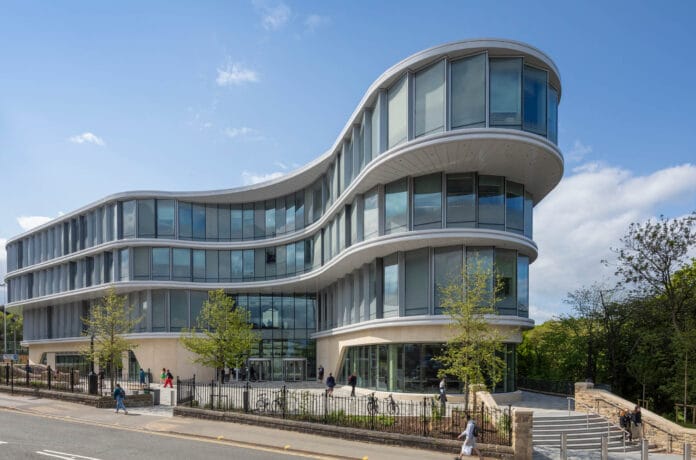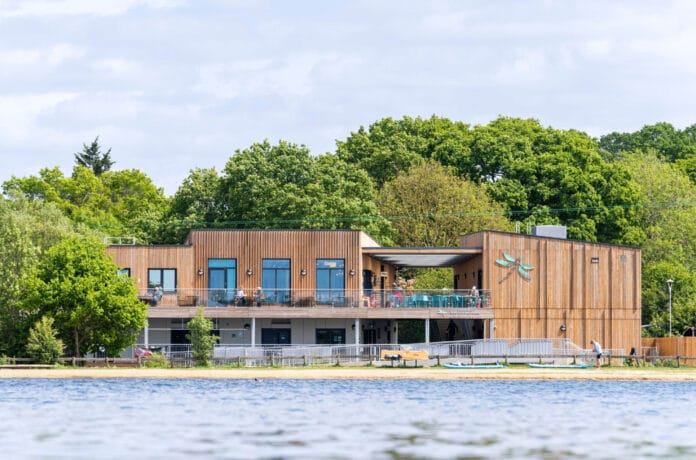
The Circular Twin project is an innovative Research and Development process which proves how the early alliance of designers, clients, contractors and the supply chain leads to a significant reduction in Whole Life Carbon calculation.
Design Approach
As part of a collaborative initiative with partners Morgan Sindall, SCAPE, Cundall and Lungfish Architects, HLM set out to redesign an existing school, to find out ‘What happens if we put carbon before capex?’ Every design decision was made with the lowest possible carbon implications in mind, with staggering results that proved the potential of a new, collaborative approach to design in helping the UK meet its net zero ambitions.
As part of an industry-wide collaborative initiative HLM joined teams from Morgan Sindall Construction, SCAPE, Cundall and Lungfish Architects to work together to innovate a new process for designing and delivering construction projects, where reducing whole life carbon is the primary objective. By applying lessons learned from past projects, challenging existing assumptions and utilising vertical collaboration with the whole supply chain, there are some exciting learnings to share.
Compared to the original ‘control’ scheme, the Circular Twin achieved:
- 65% reduction in whole life carbon
- >50% reduction in annual energy use (40% reduction in OPEX)
- Only 1-3% increase in capital cost
- 6-10 year payback period for additional capital costs
- Up to 20% saving in programme duration
Ecological and environmental gains have been fundamental in the design development. This has included:
- Production of an Urban Greening Factor score for 3 scenarios including the baseline case, refinement of the baseline case and the radical alternative;
- Supporting on a Biodiversity Net Gain (BNG) calculation of the Urban Greening Factor scenarios (authored by the ecologists);
- Inputting into qualitative research into carbon sequestration;
- Inputting into qualitative research into Natural Capital; and
- Developing a comprehensive materials system comparison, seeking to find the most sustainable, innovative materials for hard landscaping.
The Circular Twin project responds positively to the climate emergency and demonstrated that almost cost-neutral, low carbon construction was hidden in plain sight, by the industry’s reliance on traditional design and procurement approaches. The research intends to show others how early engagement and planning can allow simple changes to be made to create long-term carbon savings.
The ultimate strategic objective of Circular Twin was to create a new process which integrates the latest standards and thought leadership on sustainability such that Whole Life Carbon is placed at the heart of design development.
It is anticipated that the outcomes of this research will be far reaching, giving prospective school clients, LCAs, Government Frameworks and other sector-specific, private, or public sector clients the power to achieve their sustainability goals.
For our industry
The outcomes will form alternative practices and procedures to the way they work. Many in the industry share our commitment to helping the UK achieve its net zero ambitions, and we hope this offers a new way of integrating that into the delivery process.
For our stakeholders
For councils and partners, the research shows the potential of what can be done. When approaching low carbon construction projects, there is a lot of misconception in the industry, and in some areas the support to achieving low carbon construction is incomplete; the Circular Twin project team wanted to challenge that.
For our end users
Pupils walking into their brand-new school, a university learner using state-of-the-art facilities, or a local resident taking a jump into their brand-new swimming pool., the aim for our industry is to find a better way for them, creating clean, green and exciting places for people to live, learn, work and play!


